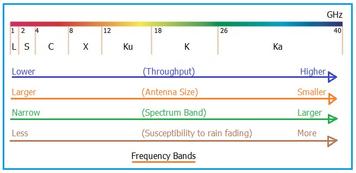
RF Wireless Bug Detectors: Types, Working, and Benefits
Explore RF wireless bug detectors: how they work, the types available, and their benefits in detecting unauthorized surveillance devices.
Advertisement

Explore RF wireless bug detectors: how they work, the types available, and their benefits in detecting unauthorized surveillance devices.

Explore the advantages and disadvantages of RFID technology, including components, applications, and implications for industries. Understand how RFID enhances efficiency while addressing security and cost concerns.
Understand the key differences between ripple factor and form factor in electronics, including their formulas and how they're applied.

Explore the distinctions between Remote Radio Heads (RRH) and Distributed Antenna Systems (DAS) in wireless communication. Learn about their architecture, applications, and when to use each technology.
Learn about RSSI (Received Signal Strength Indication) and its calculation in WLAN and WiMAX OFDM-based systems. Understand its measurement and use in wireless communication.

Explore the S band frequency range (2-4 GHz), its applications in radar and satellite communication, and its advantages and disadvantages.

Explore the benefits and drawbacks of Software Defined Radio (SDR), its implementation, and design considerations. Learn about flexibility, costs, and challenges.
Explore the differences between Software Defined Radio (SDR) and Radio Frequency System on Chip (RFSoC), their advantages, disadvantages, and applications in wireless communication.

This article explains the key differences between selectivity and blocking in wireless communication systems, focusing on interference rejection.
Explore receiver sensitivity, SNR, CNR, and noise figure for wireless standards like GSM, DECT, and GPS. Understand how these parameters impact wireless communication.

Explore the distinction between sensors and transducers, their functions, and how they relate. Learn with examples of each.

Learn the fundamental differences between single-phase and three-phase power supplies, including efficiency, voltage range, and connection types like Y and Delta.

Explore the difference between skin effect and skin depth in RF circuits. Learn how AC current concentrates on the conductor surface and how to calculate skin depth.

Comparison of ground wave, sky wave, and line of sight (LOS) propagation methods. Understand frequency ranges, characteristics, and applications of each.

An overview of the Smith chart including its construction, components, and use in impedance matching.

Understand the difference between Signal-to-Noise Ratio (SNR) and Carrier-to-Noise Ratio (CNR) in telecommunications and RF engineering, including equations and applications.
Explore the benefits and drawbacks of solid state RF energy, comparing its efficiency, control, and reliability against traditional methods in various applications.

Explore the fundamental differences between sound waves and electromagnetic (EM) waves, including their creation, propagation, and interaction with matter.

Explore the differences between spreading and scrambling techniques, both used to spread energy over a wider frequency band. Learn about their implementation, goals, and applications in wireless communication.

Explore the difference between spurious and harmonic frequencies in RF systems, their measurement in dBc, and ideal levels for optimal performance.
Advertisement